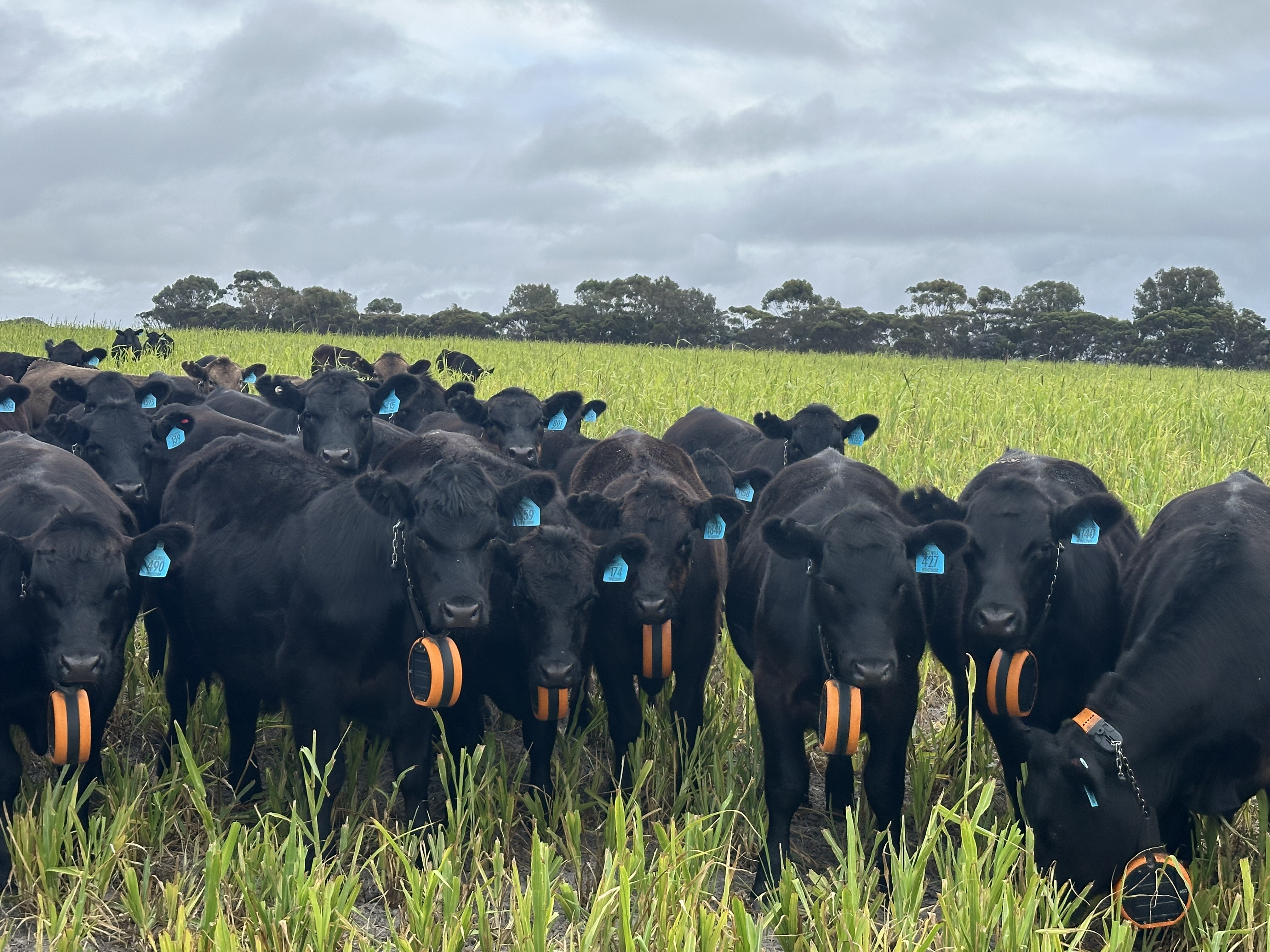eShepherd™ enhances crop yield, cattle productivity and animal welfare
Thursday, 13 June, 2024

An expansive cropping and finishing operation covering 50,000 hectares in Western Australia is using eShepherd™ virtual fencing technology to enhance crop and animal health and productivity.
Chilwell Farms, in Condingup near Esperance, is primarily dedicated to cropping wheat and canola and also runs 2000 head of Angus cattle, grass finishing about 1500 yearlings each year, and 30,000 ewes.
In January 2024, Simon Fowler adopted eShepherd to efficiently manage cattle on his cropping land, aiming to boost both crop and pasture performance and animal productivity and health.
eShepherd, Gallagher’s pioneering virtual fencing solution, uses neckbands to train cattle to remain within a virtual fencing barrier, allowing farmers to move and contain livestock from their laptop or phone.
“We’ve only been using eShepherd since January, but it has been a game changer for us,” says Simon.
Previously, the cattle free-ranged the farm's 150-hectare paddocks, often undergrazing and overgrazing areas.
“Along with having no real control of our cattle in the large paddocks, they would undergraze or overgraze areas and there was no time for pasture regeneration. The lack of efficient grazing was impacting our crop and soil management and meant we weren’t getting the most out of our cattle either,” Simon explains.
eShepherd has enabled the Fowlers to control their cattle with precision, allowing them to implement rotational grazing cells within each 150-hectare paddock. Mobs are rotated weekly through 50-to-60-hectare sized cells, ensuring even grazing of residual crops and summer crops and better cattle management. Simon hopes to intensify the grazing pattern over time.
“Using eShepherd, we have implemented the rotational grazing system. Our mobs are shifted seamlessly, taking the manual labour out of moving cattle and making both our crop and cattle management far more efficient.”
Within five days of fitting the eShepherd neckbands, Simon was surprised to see his mob of cattle contained within a cell behind the virtual fence.
“You could see them standing there, but they were contained within the virtual fence we had created,” says Simon. “The system has definitely helped achieve more even grazing and better recovery for our crops and pastures.”
Simon also uses eShepherd to fence off any wet, under-germinated, or regenerating bush areas in his paddocks. “It’s so simple. You just draw the line where the fence needs to go. We have dams in the paddocks for water, so we draw the line so the cattle still have access to the water no matter where they are in the paddock,” he explains.
eShepherd has also proved invaluable for managing animal welfare. “We get alerts if one of the cattle hasn’t been moving. Recently, I received an alert and found a steer with his head stuck in a tree fork. Before eShepherd, I wouldn’t have known what was happening with that animal until it was too late.”
The biggest win for Simon has been the increased productivity from intensive grazing management without impacting the efficiency our broadacre cropping operation achieves by having large paddocks. And being able to achieve this without any extra labor units.
“We are currently using the collars to make a virtual confinement pen of 500 steers on 8 hectares,” says Simon.
“This allows both controlled feeding and deferred pasture grazing which are both important in a year like this where we have had a very dry start. So far it is working well for this purpose and has saved on the cost of building a physical pen,” he says.
Simon’s next goal is to further fine-tune his grazing strategies and integrate more automated processes.
“Our local grower group ASHEEP and BEEF has also been following our work with eShepherd, and many of them are keen to see what it can do for them,” he says. “eShepherd has definitely enhanced our ability to manage our cattle on our cropping land, improving our efficiency, animal welfare, and productivity.”
To learn more or sign up for eShepherd, click here.